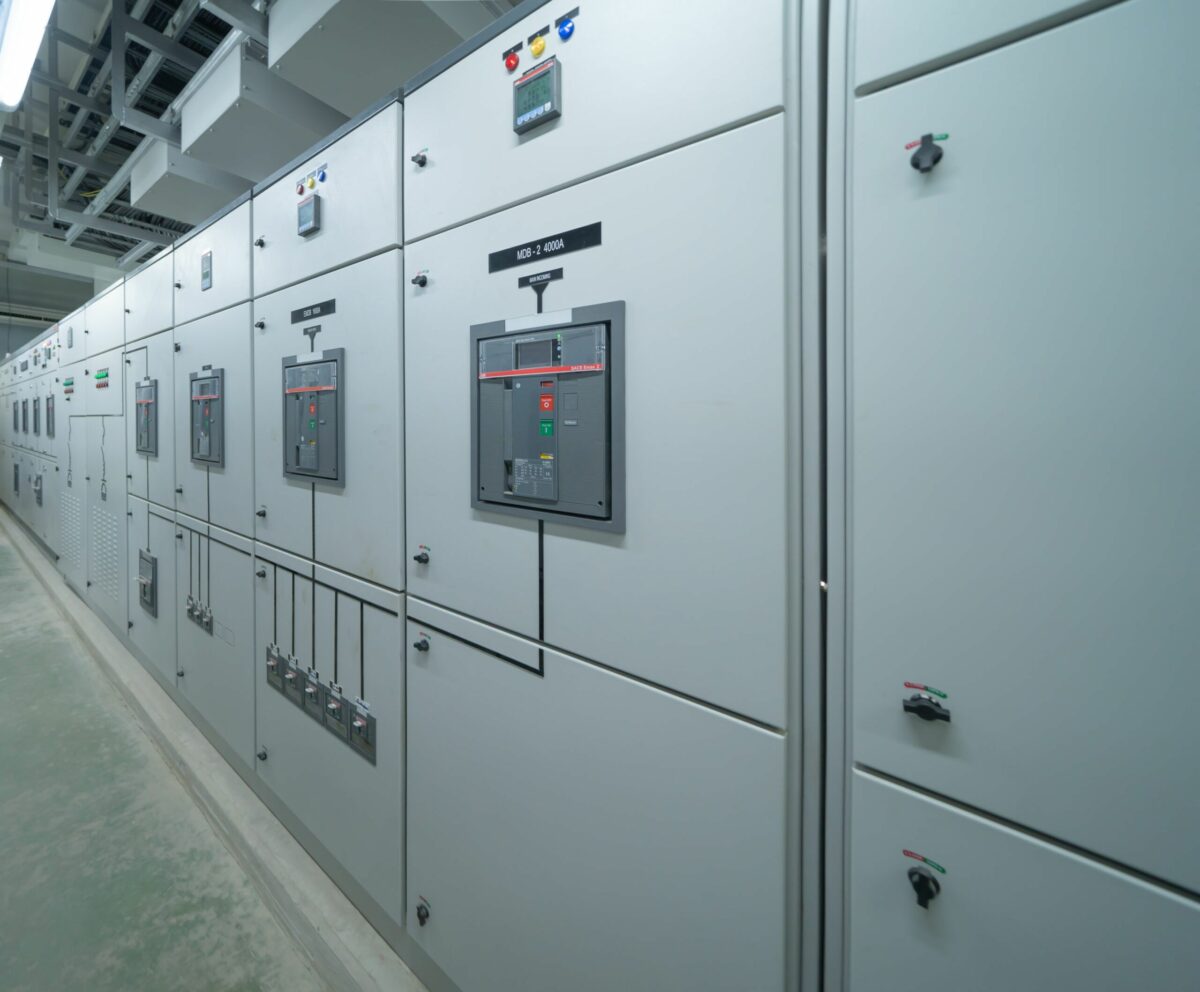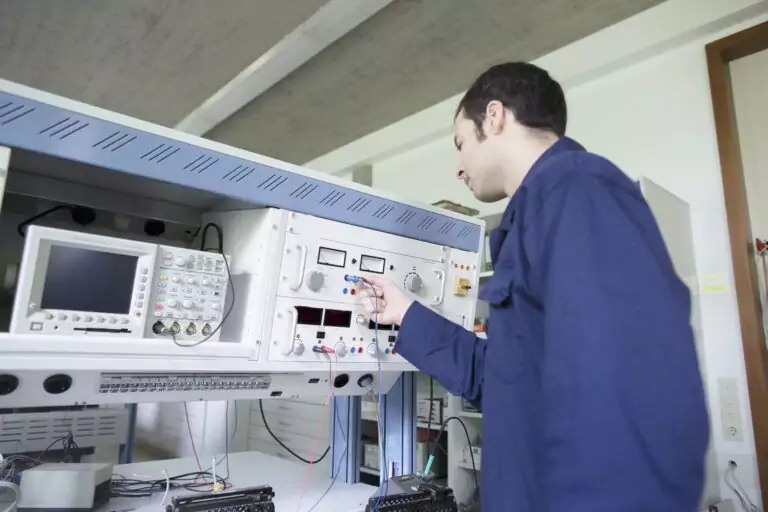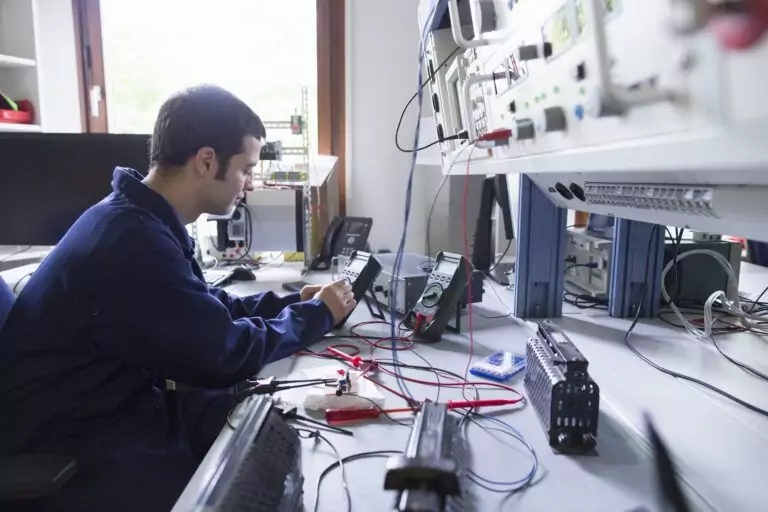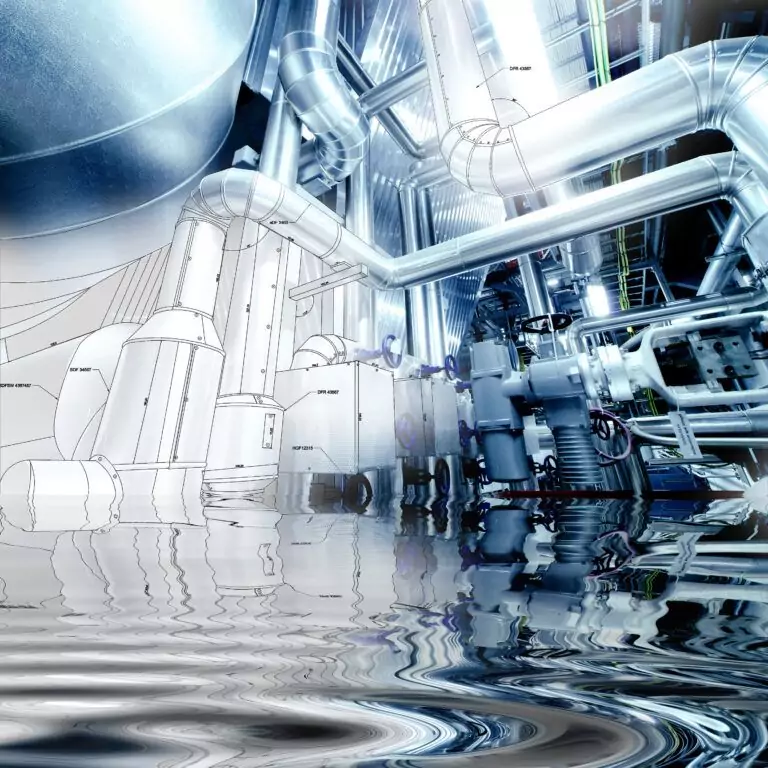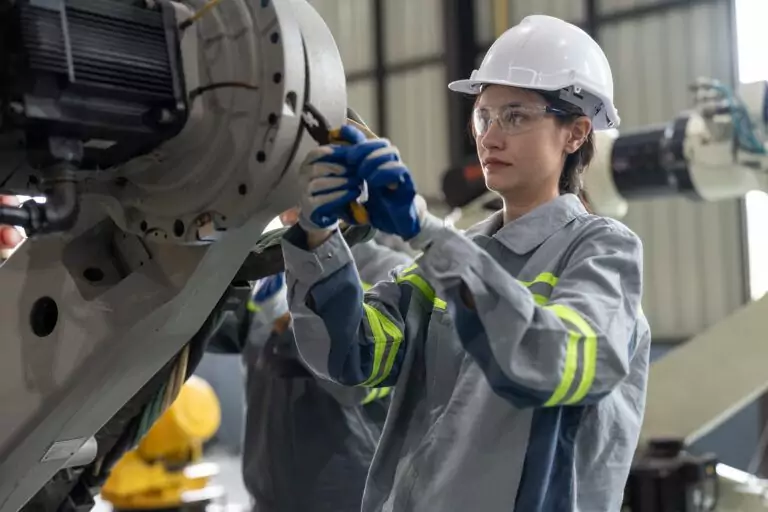Switchgear: it’s not just a piece of electrical equipment; it’s the backbone of safety, reliability, and efficiency in manufacturing plants. Wondering why and how to install it in your facility? You’re in the right place!
This article dives into the nitty-gritty of switchgear – from the crucial role it plays in managing electrical power to ensuring your plant runs smoothly without any hitches. Whether it’s preventing electrical fires, ensuring continuous operation, or optimising energy use, switchgear is your go-to solution. We’ll guide you through the types of switchgear suited for different voltage levels, the preparatory steps before installation, and the actual installation process, ensuring you’re well-equipped to enhance your plant’s electrical distribution system.
Plus, we’ll touch on the essential maintenance practices to keep your switchgear in tip-top condition. Ready to make a strategic move towards a safer, more reliable, and efficient manufacturing environment? Let’s get started on this electrifying journey!
Why Install Switchgear in a Manufacturing Plant?
Switchgear, a pivotal component in electrical distribution systems, is essential in manufacturing plants for several compelling reasons, all of which orbit around the paramount goal of ensuring safety, reliability, and efficiency in electrical power management. At the heart of its importance is switchgear’s role in controlling, protecting, and isolating electrical equipment, safeguarding the intricate network of machines that drive production processes.
It is a foundational element that supports the complex web of manufacturing operations, ensuring they can run smoothly, safely, and cost-effectively.
Safety from Electrical Hazards
Ensuring safety from electrical hazards stands as a paramount concern within any manufacturing environment. The strategic deployment of switchgear serves as a cornerstone in this endeavour, offering a robust mechanism designed to interrupt power in the event of electrical faults. This critical functionality markedly diminishes the risks associated with electrical fires, equipment damage, and, most importantly, personnel injuries.
By adhering to stringent safety regulations, the incorporation of switchgear into the electrical distribution system of a manufacturing facility not only enhances safety measures but also establishes a safer working environment, underscoring its indispensable value.
Efficiency in Power Distribution
The pursuit of efficiency in power distribution is fundamental to managing operational costs and promoting environmental sustainability within manufacturing settings. Switchgear emerges as a pivotal tool in this context, facilitating the effective management and distribution of electrical load. This capability ensures the plant’s diverse power demands are met with precision, avoiding wastage or inefficiency and optimising energy consumption.
The judicious installation of switchgear thus translates into substantial cost savings and bolsters the overarching aim of environmental stewardship, highlighting its critical role in the efficient allocation of electrical resources.
Reliability for Continuous Operation
The essence of reliability for continuous operation cannot be overstated in the realm of manufacturing, where productivity and operational continuity are paramount. Switchgear enhances the reliability of the electrical supply by enabling swift problem isolation and simplifying maintenance processes. This ensures a stable and uninterrupted power supply, a necessity in the demanding environment of manufacturing.
Disruptions in power can precipitate costly downtime and adversely affect the supply chain. Consequently, the strategic incorporation of switchgear is a decision that underpins the seamless and efficient functioning of manufacturing processes, guaranteeing their smooth and reliable execution.
Types of Switchgear
Switchgear is categorised based on the voltage it is designed to handle, ensuring optimal functionality across various segments of a manufacturing plant’s electrical distribution system.
This classification ensures that each segment of the plant’s electrical infrastructure is equipped with switchgear that is precisely engineered to manage its specific power demands, enhancing safety, efficiency, and reliability throughout the operation.
High Voltage (HV) for Main Power Lines
High Voltage (HV) switchgear is indispensable for managing and safeguarding the main power lines that supply electricity to a manufacturing plant. Designed to handle voltages typically exceeding 36 kV, HV switchgear is crucial for the initial reception and distribution of power from external sources. It ensures the safe and efficient transition of electricity into the facility, setting the stage for its subsequent distribution.
Medium Voltage (MV) for Distribution
Medium Voltage (MV) switchgear serves as the backbone of electrical distribution within a manufacturing plant. Operating within the 3 kV to 36 kV range, it efficiently channels electricity from the main power supply to various sectors of the plant. This layer of distribution is vital for maintaining balanced electrical loads and optimising efficiency, ensuring that each section receives the power it needs for operation.
Low Voltage (LV) for End-User Applications
Low Voltage (LV) switchgear is specifically designed for direct engagement with the end-user applications and machinery that drive the plant’s production. Operating at voltages below 1 kV, it represents the final step in the plant’s power distribution process, delivering electricity directly to production equipment. LV switchgear is essential for the fine control and protection of these machines, guaranteeing both operational safety and reliability.
Preliminary Installation Steps
Before installing switchgear in a manufacturing plant, a series of critical preliminary steps must be meticulously followed to ensure the process aligns seamlessly with operational requirements and safety regulations.
These foundational steps are indispensable to a successful switchgear installation, paving the way for a system that bolsters the plant’s electrical infrastructure’s safety, reliability, and efficiency.
Assess Electrical Load and Future Expansion
Assessing the electrical load and anticipating future expansion stand as pivotal initial steps in the switchgear installation process. This critical evaluation encompasses analysing the present electrical demand within the manufacturing facility and projecting future adjustments or growth in operational needs. Such foresight ensures the chosen switchgear system not only fulfils current operational demands but also possesses the scalability to support future expansions, effectively future-proofing the electrical infrastructure for efficiency and reliability over time.
Select Switchgear Based on Application and Load
The selection of switchgear is intricately linked to its specific application and the electrical load it is intended to manage. This selection process involves choosing among various types of switchgear, such as high voltage (HV) for main power lines, medium voltage (MV) for distribution networks, and low voltage (LV) for direct end-user applications based on their capability to manage and distribute electrical power efficiently within the plant. Optimal selection is crucial for enhancing the performance and safety of the electrical distribution system, ensuring the switchgear can adeptly handle the designated load with utmost efficiency and minimal risk.
Design Layout Considering Accessibility and Safety
Designing the layout of the switchgear installation demands meticulous attention to accessibility for maintenance and safety considerations. The layout planning should prioritise ease of access to switchgear for routine inspections, maintenance activities, and swift emergency responses, all while strictly adhering to established safety standards to safeguard personnel against electrical hazards. This strategic planning is vital for establishing an operational environment that maximises efficiency and ensures a high standard of safety, significantly reducing downtime and facilitating the smooth implementation of safety protocols.
Site Preparation for Switchgear
Site preparation is a fundamental step in the process of switchgear installation, crucial for establishing a safe and efficient electrical distribution framework within a manufacturing plant.
Through meticulous site preparation, the groundwork is laid for a switchgear installation that bolsters the safety, reliability, and operational efficiency of the plant’s electrical infrastructure.
Allocate Space Based on Switchgear Dimensions
Allocating space tailored to the switchgear dimensions is a pivotal step, ensuring the designated area accommodates installation, operation, and future maintenance needs efficiently. This process involves careful measurement and strategic planning of the installation site, emphasising the importance of accessibility and the allowance for potential system expansion. Optimal space allocation is crucial for facilitating a smooth installation process and ensuring the switchgear’s long-term operational efficiency.
Construct a Robust Foundation
The construction of a robust foundation stands as a cornerstone for the switchgear’s stability and longevity. This entails the development of a foundation that robustly supports the switchgear’s weight and the dynamic forces encountered during its operation, thereby shielding it from physical disturbances and environmental factors. A sturdy foundation is essential not only for the physical anchoring of the switchgear but also for enhancing the overall safety and reliability of the electrical distribution system.
Ensure Ventilation for Cooling
Ensuring adequate ventilation for cooling is imperative to avert overheating, thereby preserving the switchgear’s performance and extending its service life. This involves either the integration of mechanical ventilation systems or the architectural design of the space to promote natural air circulation. Effective cooling strategies are key to protecting the switchgear against thermal damage and ensuring its efficient function over an extended period.
Installing the Switchgear
The installation of switchgear is a meticulous process that underscores the importance of precision and safety to ensure the electrical distribution system’s optimal functionality and safety within a manufacturing plant.
Each step in this process is executed with a keen focus on detail, safety, and operational efficiency, guaranteeing the switchgear’s reliable function and contributing to the overall safety of the manufacturing environment.
Unpack and Inspect for Damage
Unpacking and inspecting the switchgear upon its arrival is a critical first step to ensure that all components are free from damage incurred during transportation. This meticulous inspection safeguards the integrity of the electrical distribution system by confirming that every part of the switchgear is in optimal condition and ready for a flawless installation.
Securely Mount the Switchgear
Securely mounting the switchgear is essential for its stability and operational efficacy. This process involves firmly attaching the switchgear to a pre-prepared foundation or structure, ensuring it can withstand the rigours of operational stress and environmental conditions. Proper installation guarantees the switchgear’s durability and contributes to the reliability of the electrical distribution system.
Connect to Power Sources with Precision
Connecting to power sources with precision is crucial for the effective integration of the switchgear into the plant’s electrical system. This delicate operation demands careful attention to ensure all connections are securely and accurately made, optimising the switchgear’s functionality and facilitating efficient power distribution across the manufacturing facility.
Ground to Prevent Electrical Shock
Grounding the switchgear is a non-negotiable safety measure designed to prevent electrical shock, thereby protecting both the manufacturing personnel and the equipment. This step establishes a direct path for electrical current to the earth in the event of a fault, which is paramount for the safe operation of the switchgear and maintaining a safe work environment.
Testing Switchgear Post-Installation
After the switchgear is securely installed, conducting a comprehensive suite of tests is pivotal to ensure its operational integrity and adherence to safety protocols. These tests serve as a critical checkpoint for detecting and rectifying any potential issues before the switchgear is fully operational, thus safeguarding the manufacturing plant’s electrical distribution system’s safety, efficiency, and reliability.
Conduct a Thorough Visual Inspection
Conducting a thorough visual inspection marks the first critical step in the post-installation testing sequence. This detailed examination is aimed at ensuring the switchgear’s physical integrity and correct installation. Inspectors meticulously check for any signs of damage, improper assembly, or deviations from prescribed installation standards, confirming that every component is properly positioned and securely anchored.
Perform Mechanical Operation Tests
Subsequent to the visual inspection, performing mechanical operation tests is essential to assess the functionality of the switchgear’s moving parts. This phase involves the manual or mechanical actuation of switches, circuit breakers, and other operational mechanisms to verify their free movement and correct operation. These tests are crucial for ensuring that the switchgear components can perform their intended functions efficiently and without hindrance.
Execute Electrical Tests to Ensure Functionality
The culmination of the post-installation testing process involves executing electrical tests to validate the switchgear’s performance and safety under operational conditions. These tests are designed to confirm the switchgear’s capability to handle its expected electrical load and to test the effectiveness of its protection systems when subjected to live electrical currents. Successful completion of these electrical tests certifies that the switchgear is fully functional and ready to be integrated into the manufacturing plant’s electrical distribution system, ensuring reliable and safe operation.
Maintenance of Switchgear
Maintaining switchgear is paramount for ensuring its longevity, reliability, and safety within the electrical distribution system of a manufacturing plant. These maintenance practices are essential for minimising downtime, guaranteeing continuous operation of the manufacturing plant, and protecting the facility and its personnel from electrical hazards.
Schedule Regular Inspections for Wear and Tear
Scheduling regular inspections to monitor for wear and tear is a proactive measure to ensure the switchgear’s longevity and reliability. These periodic checks are designed to identify and rectify any emerging issues promptly, preventing them from escalating into significant problems. Consistent inspection routines are key to maintaining the switchgear in optimal working condition, thereby supporting the seamless operation of the manufacturing plant.
Clean to Prevent Dust Accumulation
Regular cleaning of the switchgear is imperative to prevent dust accumulation, which can compromise the system’s functionality and pose a safety risk. Dust and debris can obstruct the electrical components, leading to inefficiencies or failures. Maintaining a clean switchgear environment is essential for its efficient performance and for minimising the risk of operational disruptions.
Test and Calibrate for Accurate Operation
Regularly testing and calibrating the switchgear is crucial for ensuring its accurate and efficient operation. These activities confirm that the switchgear can handle the electrical demands placed upon it and that its safety mechanisms are functioning correctly. Through systematic testing and calibration, the switchgear is kept at peak operational readiness, guaranteeing reliable power distribution and protection within the manufacturing environment.
Safety Precautions During Installation
Adhering to safety precautions during the installation of switchgear is paramount to prevent accidents and ensure the safety of personnel involved in the process.
These safety measures are not merely regulatory obligations but fundamental practices that safeguard the installation team and uphold the operational integrity of the manufacturing plant’s electrical distribution system.
Wear Appropriate PPE
Wearing appropriate Personal Protective Equipment (PPE) is a crucial safety protocol for individuals involved in the switchgear installation. This equipment, including gloves, safety glasses, and protective clothing, acts as a critical barrier against electrical shocks and other potential hazards encountered during installation. Ensuring that all personnel are adequately protected is a fundamental step in safeguarding against injuries.
Disconnect Power Before Installation
Disconnecting power before installation is an essential safety measure that must be rigorously observed to prevent electrical accidents. This step involves ensuring that all power sources are securely deactivated prior to the commencement of the installation process. It is a vital precaution that guarantees a safe working environment for the installation team, eliminating the risk of electrical shocks.
Adhere to Manufacturer and Local Safety Codes
Adhering to manufacturer and local safety codes is imperative for conducting a safe and compliant switchgear installation. Following these guidelines and regulations ensures that the installation process aligns with established safety standards and meets all necessary regulatory requirements. Compliance with these codes is crucial for protecting the installation team and maintaining the integrity of the electrical distribution system within the manufacturing plant.
Powering the Future of Manufacturing
Switchgear is far more than just a piece of electrical equipment; it’s the silent sentinel that keeps manufacturing operations safe, efficient, and continuously productive. From selecting the right voltage level and preparing the site to executing a flawless installation and maintenance plan, every step plays a critical role in building a resilient electrical infrastructure.
At Vista Projects, we combine deep engineering expertise with system integration excellence to ensure your facility benefits from smart, scalable switchgear installations. Our focus on data-driven decisions and sustainability means you can count on solutions that reduce both total installation costs and long-term operational risks.
Let’s elevate your plant’s electrical reliability by connecting with Vista Projects to engineer smarter, safer, and more efficient operations.
